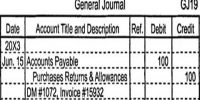A contra account offsets another, the related account with which it is paired. If the related account is an asset account, then the contra asset account is used to offset (reduce) it with a credit balance. If the related account is a liability account, then the contra liability account is used to ‘offset (increase) it with a debit balance.
The Contra Asset Account
The most common contra account is the accumulated depreciation account, which offsets the fixed asset account. The fixed asset account contains the original acquisition cost of a number of fixed assets, while the contra account (accumulated depreciation) contains the sum total of all the depreciation expense that has been charged against those assets over time. Taken together, the asset account and contra asset account reveal the net amount of fixed assets still remaining. A contra asset account is not classified as an asset since it does not represent long-term value, nor is it classified as a liability, since it does not represent a future obligation.
The Contra Liability Account
The contra liability account is less common than the contra asset account. An example of a contra liability account is the bond discount account, which offsets the bond payable account. The two accounts together yield the carrying value of the bond. A contra liability account is not classified as a liability since it does not represent a future obligation.
The Contra Equity Account
Within equity, an example of a contra account is the treasury stock account; it is a deduction from equity because it represents the amount paid by a corporation to buy back its stock.
The Contra Revenue Account
Contra revenue is a deduction from gross rc enue, which results in net revenue. Contra revenue transactions are recorded in one or more contra revenue accounts. which usually have a debit balance (as opposed to the credit balance in the typical revenue account). There are three commonly used contra revenue accounts, which are:
- Sales returns: Contains either an allowance for returned goods or the actual amount of revenue deduction attributable to returned goods.
- Sales allowances: Contains either an allowance for reductions in the price rice of a product that has minor defects or the actual amount of the allowance attributable to specific sales.
- Sales discounts: Contains the amount of sales discount given to customers, which is usually a discount given in exchange for early payments by customers.















